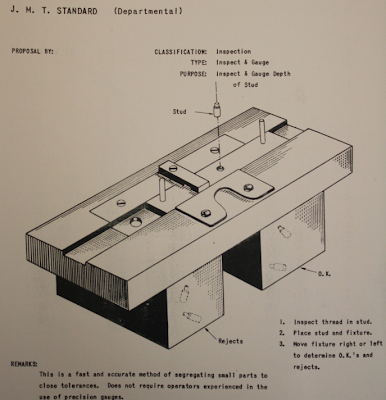In Lean, we often hear that we should let people make mistakes. Many people will respond to this with a head nod, but inside are probably saying, “as long as that mistake doesn’t cost us anything”. Grappling with this paradox, which often paralyzes us from letting control of people and their ideas, is a most difficult task. An advantage of implementing a kaizen teian, or idea system, is that you can ease your way into letting people safely fail. It is good for people for two reasons:
- Managers learn how to let go of control, while providing opportunities to coach people.
- People learn how to improve their work - in a rapid and easy fashion, while coping with small failures. Ultimately, this builds their confidence in their skill and abilities.
Example. A very smart and capable technician said to me once, “this small kaizen idea program just seems to be taking us backwards – people are coming up with the silliest ideas, things that don’t even make sense. It feels like we are in kindergarten! Why don’t they come up with good ideas, things that are worthwhile?”
It is a valid point, but - in the early stages of a suggestion system - it misses the overiding goal: to gain involvement and foster workplace learning. The technician's frustration is that a suggestion to use a stool, or removing the lid to a toolbox to save a step – is a waste of time. In her mind, more important things are pressing.
The point is not to debate the merit of the suggestion – it is that the suggestion is an opportunity for the submitter to learn and for the leader to guide without taking control of the idea. And if the suggestion doesn’t work out – FAILURE – well, it is easy to learn from the simple lesson than from a complex one.
Example. Haven't we learned that accumulating conveyors in a factory are pure waste? No, many factories continue to purchase or upgrade to larger, more complex conveyance systems, sometimes using miles of conveyors. This complex problem is difficult for most people to draw any lean lessons from. In contrast, we can more easily grasp a smaller conveyance problem, such as the length of a fork truck route - something smaller in nature and within our control.
Finally, assuming that some ideas are not worth implementing is simply arrogant and isolates your people. That is management suicide. It implies that we already know the outcome: failure or success. Jumping to conclusions about ideas before the results can be checked is not only dangerous, it stifles creativity. Daniel J. Boorstin said: “The greatest obstacle to discovery is not ignorance; it is the illusion of knowledge.”
In other words, if you consider a small kaizen suggestion system start with the simple - and accept the sometimes silly - suggestions, so that your people can learn quickly by their successes and failures. By not allowing people to fail, we learn nothing except what we already think we know.
Labels: Kaizen, Lean







